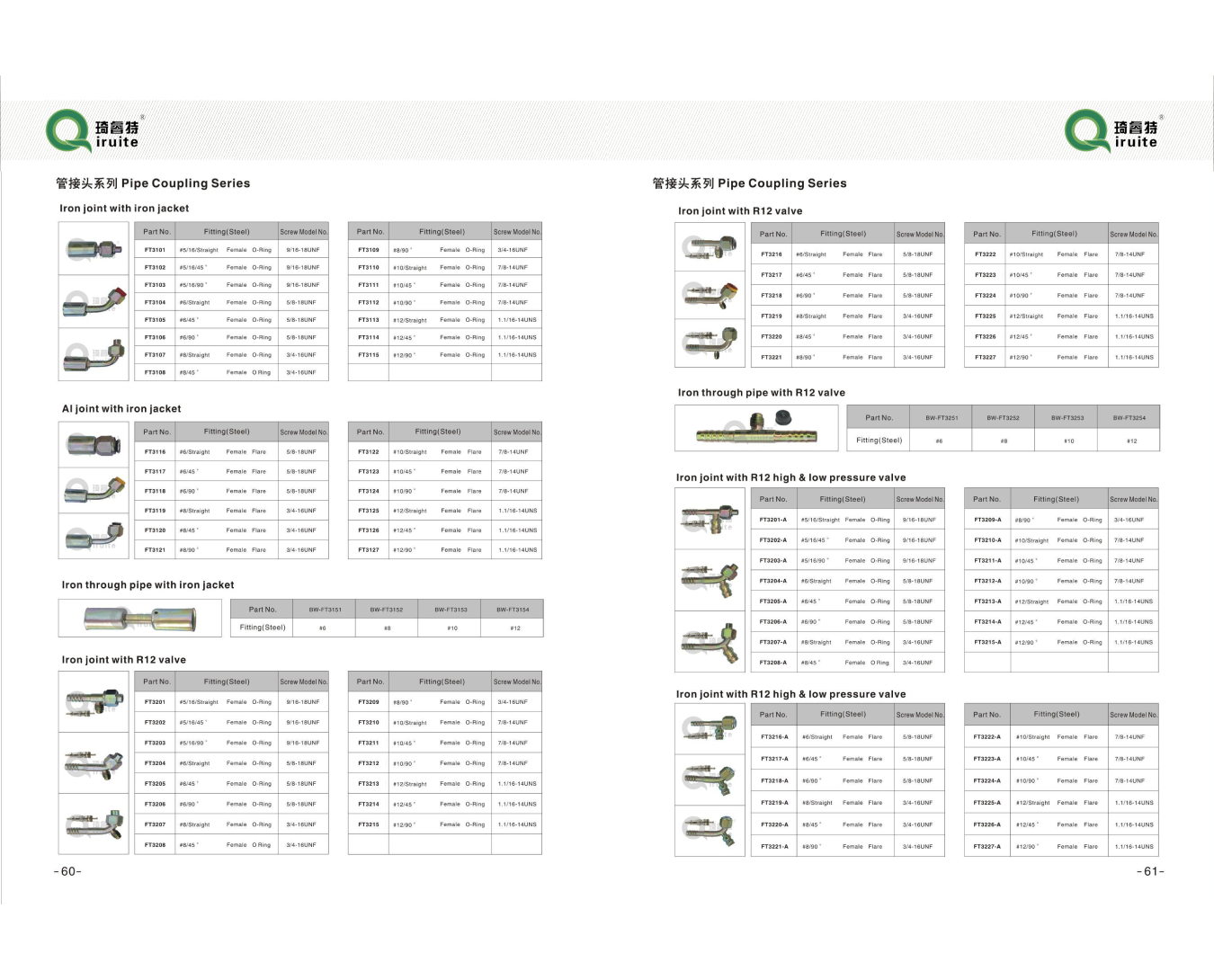diy high pressure power steering hose
DIY High Pressure Power Steering Hose A Comprehensive Guide
Power steering is a crucial component of modern vehicles, providing drivers with the ease of maneuverability necessary for navigating today's roads. However, like any automotive part, power steering hoses can wear out over time, leading to leaks and reduced performance. A high-pressure power steering hose, in particular, is vital as it carries the fluid needed to operate the steering system. Replacing this hose can seem daunting, but with the right tools and guidance, it’s a feasible DIY project for many car enthusiasts.
Understanding the High-Pressure Power Steering Hose
The high-pressure power steering hose is designed to withstand the significant pressure generated by the power steering pump. This hose typically connects the pump to the steering rack or gearbox, transporting pressurized fluid that enables easier steering. Signs of a failing hose include fluid leaks, a whining engine noise when turning, or stiff steering. If you notice any of these symptoms, it’s a good idea to inspect and potentially replace the hose.
Tools and Materials Required
Before beginning, gather the necessary tools - Socket set and wrenches - Screwdrivers (flathead and Phillips) - Hose clamps - A new high-pressure power steering hose (specific to your vehicle) - Power steering fluid - Drain pan - Safety goggles and gloves - Rags for cleanup
Step-by-Step Guide to Replacing Your High-Pressure Power Steering Hose
1. Safety First Park your vehicle on a flat surface and ensure the engine is off and cool. Engage the parking brake. Put on safety goggles and gloves to protect yourself from any fluid spills.
2. Locate the Power Steering Hose Open the hood and locate the power steering pump. Trace the high-pressure hose from the pump to the steering rack. This hose will have a metal or rubber connection that can be disconnected.
diy high pressure power steering hose

3. Drain the Fluid To minimize spills, place a drain pan underneath the power steering system. Carefully disconnect the hose fittings at both ends using the appropriate socket or wrench. Allow the remaining fluid to drain into the pan.
4. Remove the Old Hose After draining the fluid, detach the hose clamps and remove the old hose from the vehicle. If the hose is stuck, you might need to twist gently or use pliers to loosen it.
5. Install the New Hose Take the new high-pressure power steering hose and connect it to the pump and steering rack. Ensure that the hose is securely attached and use new hose clamps if necessary.
6. Replenish Power Steering Fluid Once the new hose is in place, pour the appropriate power steering fluid into the reservoir, ensuring not to overfill it. Check your owner's manual for the recommended fluid type.
7. Bleed the Power Steering System To eliminate any air bubbles that may have entered the system, start the engine and turn the steering wheel from lock to lock several times. This process helps to circulate the new fluid and ensures all air is expelled.
8. Check for Leaks With the engine running, inspect the new hose and connections for any signs of leaks. If everything appears secure, you are ready to take your vehicle for a test drive.
Conclusion
Replacing a high-pressure power steering hose may seem intimidating, but it is a manageable task with the right approach and tools. Not only can it save you money on labor costs, but it also gives you the satisfaction of having completed a vital repair. Whether you are an experienced DIYer or new to car maintenance, this guide is a step towards ensuring your vehicle's steering system operates smoothly and effectively. Always remember to dispose of old fluid responsibly, and consult a professional if you encounter difficulties during the process. Happy wrenching!
-
Ultimate Spiral Protection for Hoses & CablesNewsJun.26,2025
-
The Ultimate Quick-Connect Solutions for Every NeedNewsJun.26,2025
-
SAE J1401 Brake Hose: Reliable Choice for Safe BrakingNewsJun.26,2025
-
Reliable J2064 A/C Hoses for Real-World Cooling NeedsNewsJun.26,2025
-
Heavy-Duty Sewer Jetting Hoses Built to LastNewsJun.26,2025
-
Fix Power Steering Tube Leaks Fast – Durable & Affordable SolutionNewsJun.26,2025

